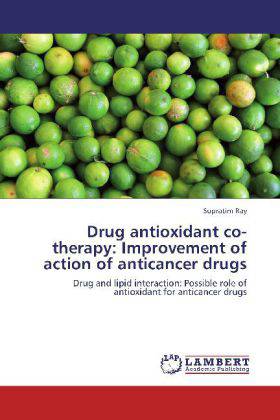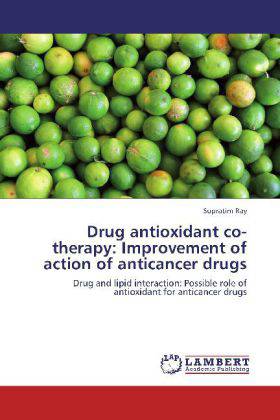
- Afhalen na 1 uur in een winkel met voorraad
- Gratis thuislevering in België vanaf € 30
- Ruim aanbod met 7 miljoen producten
- Afhalen na 1 uur in een winkel met voorraad
- Gratis thuislevering in België vanaf € 30
- Ruim aanbod met 7 miljoen producten
Zoeken
Drug antioxidant co-therapy: Improvement of action of anticancer drugs
Drug and lipid interaction: Possible role of antioxidant for anticancer drugs
Supratim Ray
Paperback | Engels
€ 48,45
+ 96 punten
Omschrijving
The development of a new drug requires a large investment of research time, trial and money spread over more than a decade. Whereas, there are many drugs which are though effective but still limited in applications due to severe toxic side effects. Hence, if these toxic side effects can be minimized, the efficacy of the drug will improve. In other words, if the toxicity is decreased, i.e., LD50 value is increased, the therapeutic index of the drug, i.e., LD50 / ED50 is automatically increased without affecting the ED50 value. But how the toxicity can be harnessed? Toxicity has many causes but one of them is lipid peroxidation. As all the drugs have to cross omnipresent membrane barriers, they must come in contact with the membrane and in that process they are likely to cause some perceptible and detectable changes in the lipid constituents of membrane barrier that may cause lipid peroxidation leading to toxic manifestations.
Specificaties
Betrokkenen
- Auteur(s):
- Uitgeverij:
Inhoud
- Aantal bladzijden:
- 92
- Taal:
- Engels
Eigenschappen
- Productcode (EAN):
- 9783659264337
- Uitvoering:
- Paperback
- Afmetingen:
- 150 mm x 220 mm

Alleen bij Standaard Boekhandel
+ 96 punten op je klantenkaart van Standaard Boekhandel
Beoordelingen
We publiceren alleen reviews die voldoen aan de voorwaarden voor reviews. Bekijk onze voorwaarden voor reviews.











